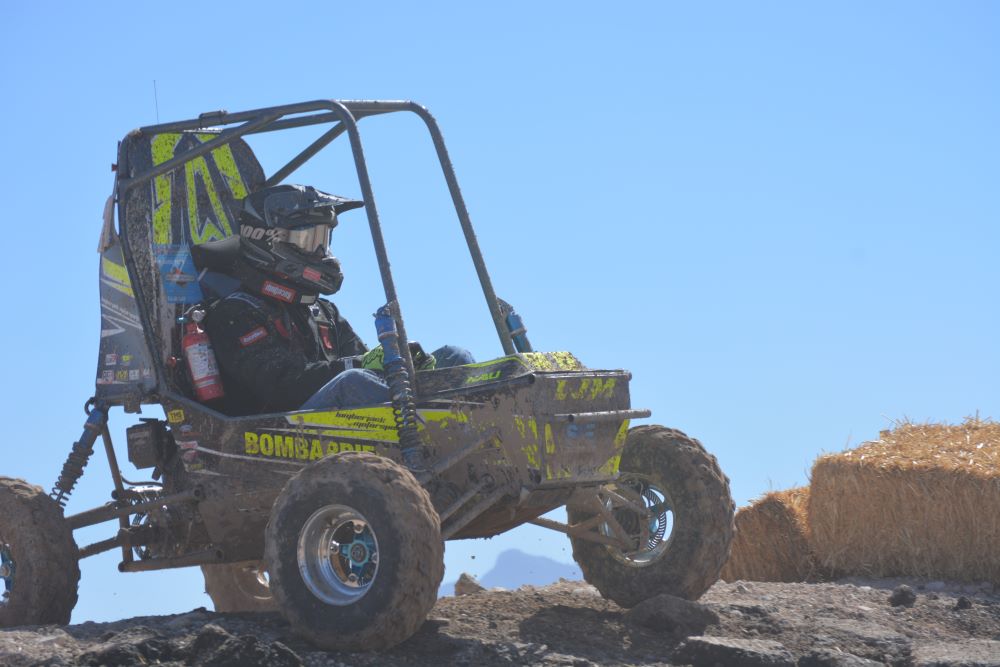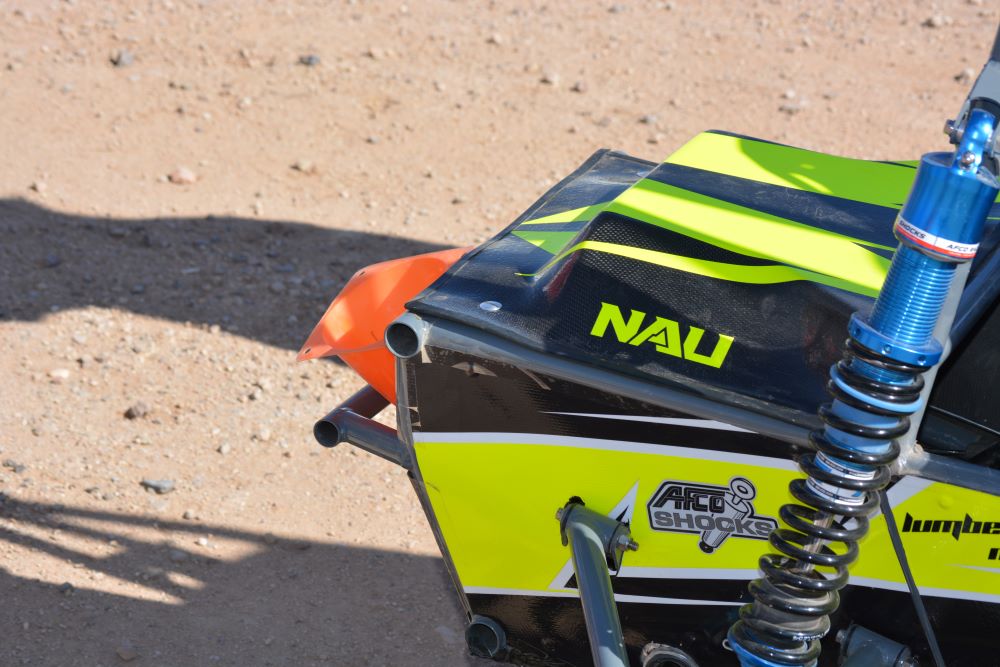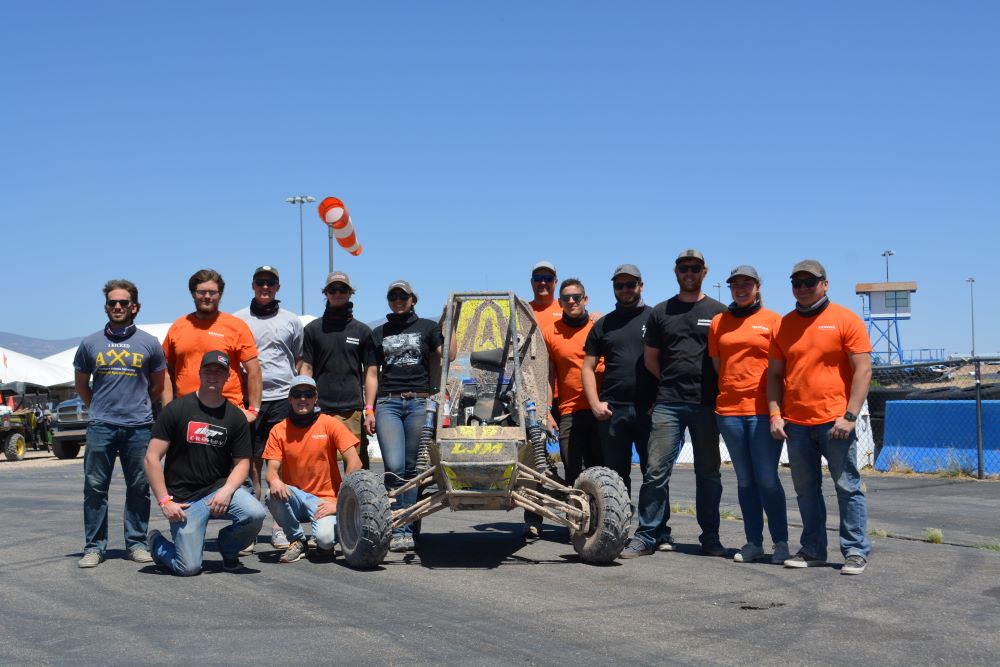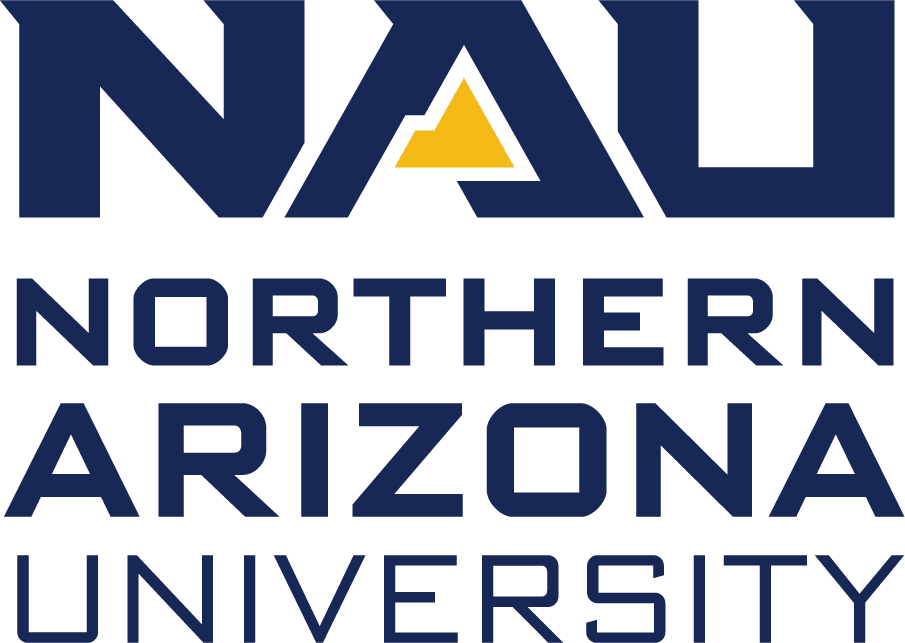For the first time in Northern Arizona University history, the Lumberjack Motorsports team finished in the top five at the 2021 Society of Automotive Engineers (SAE) Baja Competition. They finished fifth overall and took second in the suspension subcategory, crediting their success to extraordinary teamwork.
The Baja SAE program is sponsored by SAE International and emulates a real-life working situation students would encounter in the industry. Student teams create a prototype of a 4-wheel-drive, all-terrain vehicle for recreational use that should be marketable to a nonprofessional weekend off-road enthusiast. Once created, they go head-to-head against other schools in a competition.
This year’s team was a group of 12 senior mechanical engineering students led by team captain Tyler Trebilcock and team manager Emily Kasarjian. Team members were Brendan Paulo, Brian Connors, Jacob Kelsey, Ryan Meyer, Tanner Gill, Colton Lacey, Ashley Redmond, Logan Faubion, Bailey McMullen and Matthew Woodward. They were advised by mechanical engineering faculty Sara Kay Oman, senior lecturer and capstone coordinator; Perry Wood, senior instructional laboratory coordinator; and David Willy, senior lecturer.
“The team’s biggest strength this year was definitely the cohesiveness,” Trebilcock said. “We had good chemistry and could go out to dinner as an entire team and enjoy hanging out outside of the project. It made the project more fun and motivated everybody to work more.”
“The team also was highly motivated to put in the hefty hours necessary to create a competitive vehicle,” Kasarjian said. “This made it much easier to work together since the team had a strong desire to produce and move forward every week. I am extremely thankful for the team we had; everyone was able to learn so much from each other.”

To design their vehicle, the motorsports team divided into four sub-teams: drivetrain, front-end suspension, rear-end suspension and frame. This allowed individual focus on each component of the vehicle.
“I learned a lot about team management and project integration throughout the duration of this project,” Kasarjian said. “Making different subcomponents work smoothly together after focusing on them individually was extremely important.”
The drivetrain sub-team was responsible for the design and manufacturing of the gear box, half shafts and chain drive system. The front and rear suspension teams worked on the suspension system, which consisted of upper and lower links, shocks, mounting points and steering. The frame sub-team was responsible for the chassis, or skeleton of the vehicle, and miscellaneous components such as the panels, seat and safety equipment.
“We ensured that all of our sub-teams worked together on a continuous basis,” Kasarjian said. “I also learned how much I enjoy working in a hands-on environment, and that the camaraderie you develop with your teammates is extremely valuable to the project’s atmosphere and results.”
Though it seems like a lot of moving parts to keep aligned, the sub-teams were the easy part.
“The biggest challenge the team faced was mitigating the COVID-19 protocols set by NAU and SAE International,” Trebilcock said. “The team had to work diligently while still operating in a safe, healthy manner. Reduced meeting times and manufacturing resources were also a challenge during the project.”
Lab adviser Willy said students had to navigate added safety protocols in the fabrication shop and research labs, as well as work from home, but despite the situational conflicts, the team made the most of in-person meetings and were efficient with the building materials available. This was the first year titanium parts were designed in the team vehicle, which made a difference in the vehicle’s overall weight and helped them earn their top five spot on competition day.
“The competition was awesome,” Trebilcock said. “I felt like we had a well-prepared car. I knew all we had to do was execute the weekend as planned and we would be successful. The team worked hard. We had several nights where we only got a few hours of sleep and worked on the details of the car for the entirety of the day.”
Trebilcock said holding the trophy up for the first time in NAU history made all their late nights, 60-hour work weeks and COVID-19 mitigation challenges worth it.

For more information about the team, visit the Lumberjack Motorsports webpage and follow their adventures on Instagram and FaceBook.
About SAE International
SAE International is a global association of more than 128,000 engineers and related technical experts in the aerospace, automotive and commercial-vehicle industries. It works to connect and educate mobility professionals while developing and advancing these areas of engineering and enables safe, clean and accessible mobility solutions.
Jacklyn Walling | NAU Communications




